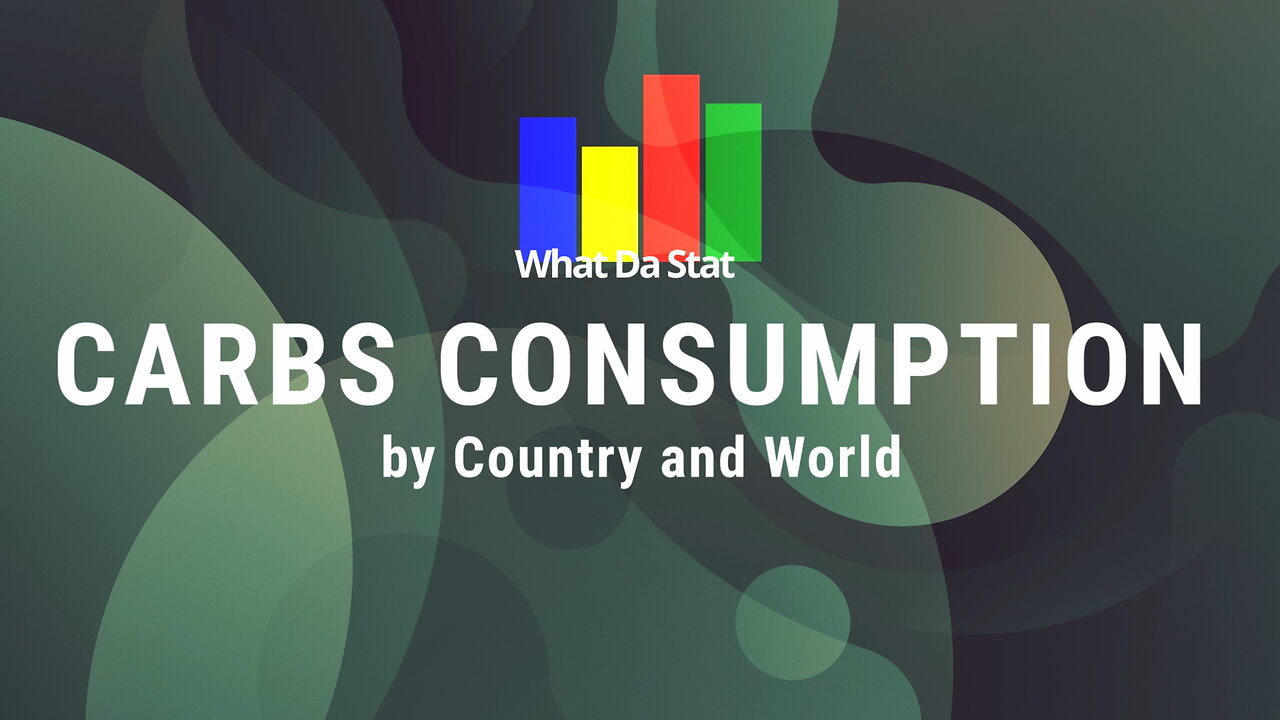Premium Only Content

Daily Carbohydrates Consumption by Country and World since 1961
Data are based on supply to households and individuals. Please note that data of supply to a household and to and individual does not take food waste on consumer level into account. So, the actual average consumption is lower than supply. Waste amount also vary between different countries.
Since 1961, global carbohydrate consumption has seen significant changes influenced by economic development, dietary transitions, and cultural shifts. Carbohydrates, primarily sourced from grains like wheat, rice, and maize, have been the staple of diets worldwide. In the 1960s, diets in developing regions were heavily reliant on these staples, while developed countries had more diverse carbohydrate sources, including higher consumption of processed foods and sugars.
Over the decades, rapid industrialization and urbanization led to increased availability and consumption of processed foods rich in refined carbohydrates and sugars, particularly in developing countries. This shift contributed to rising obesity and diabetes rates globally. In contrast, some developed countries have seen a trend toward healthier carbohydrate choices, with a growing preference for whole grains and a reduction in refined sugars, driven by heightened health awareness.
Economic growth has also played a crucial role, as increased income levels have enabled more diverse diets. The globalization of food systems and the influence of Western dietary patterns have further shaped carbohydrate consumption trends.
Overall, while carbohydrates remain a fundamental component of diets worldwide, the type and quality of carbohydrates consumed have evolved significantly, reflecting broader socioeconomic and cultural changes.
Data source: FAO
Music: IMPERSS MUSIC - Out of Time (Original Mix) https://www.youtube.com/watch?v=JQ0DOeaT9ds
Data visualization created with flourish.studio https://flourish.studio
-
 LIVE
LIVE
BrancoFXDC
7 hours ago $0.67 earnedHAPPY NEW YEARS - Road to Platinum - Ranked Warzone
741 watching -
 5:53
5:53
SLS - Street League Skateboarding
5 days agoBraden Hoban’s San Diego Roots & Hometown Win | Kona Big Wave “Beyond The Ride” Part 2
75.7K12 -
 6:03:57
6:03:57
TheBedBug
12 hours ago🔴 LIVE: EPIC CROSSOVER - PATH OF EXILE 2 x MARVEL RIVALS
82.7K5 -
 1:12:45
1:12:45
The Quartering
9 hours agoTerror In New Orleans, Attacker Unmasked, Tesla BLOWS UP At Trump Tower! Are We Under Attack?
145K250 -
 1:32:08
1:32:08
Robert Gouveia
11 hours agoNew Year TERROR; Trump Speaks at Mar-a-Lago; Speaker Johnson FIGHT
118K103 -
 22:21
22:21
Russell Brand
1 day agoVaccines Don't Cause Autism*
189K735 -
 2:05:27
2:05:27
The Dilley Show
11 hours ago $3.46 earnedNew Years Agenda, New Orleans Terror Attack and More! w/Author Brenden Dilley 01/01/2025
111K38 -
 25:45
25:45
Outdoor Boys
3 days ago3 Days in Arctic Survival Shelter - Solo Bushcraft Camping & Blacksmithing
81.5K27 -
 2:59:05
2:59:05
Wendy Bell Radio
17 hours agoAmerica Is Back
127K120 -
 1:45:57
1:45:57
Tucker Carlson
5 days agoAaron Siri: Everything You Should Know About the Polio Vaccine, & Its Link to the Abortion Industry
164K194